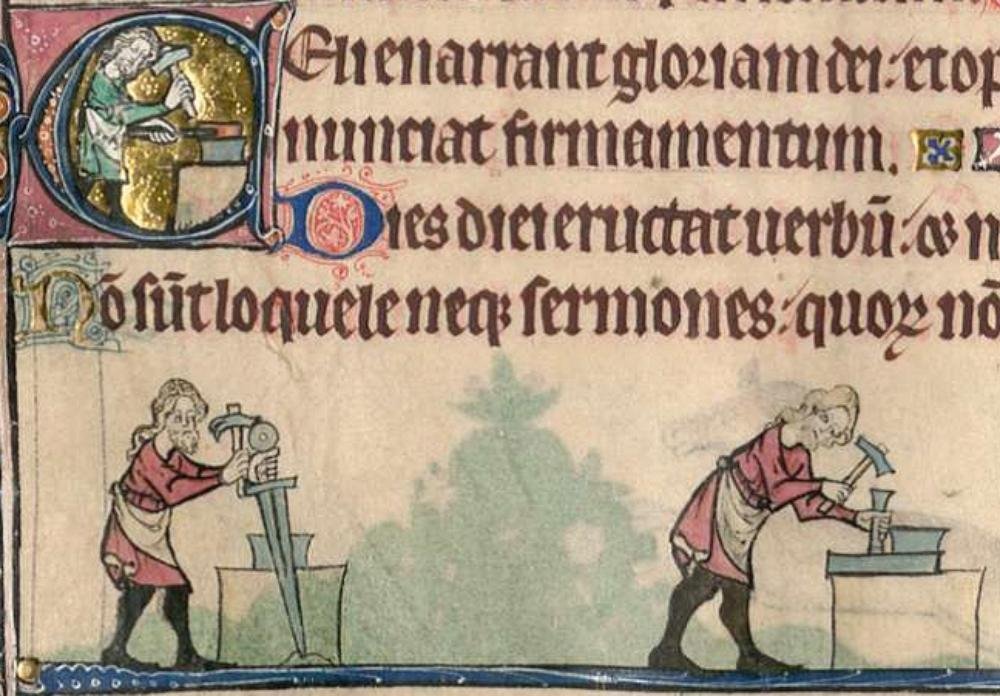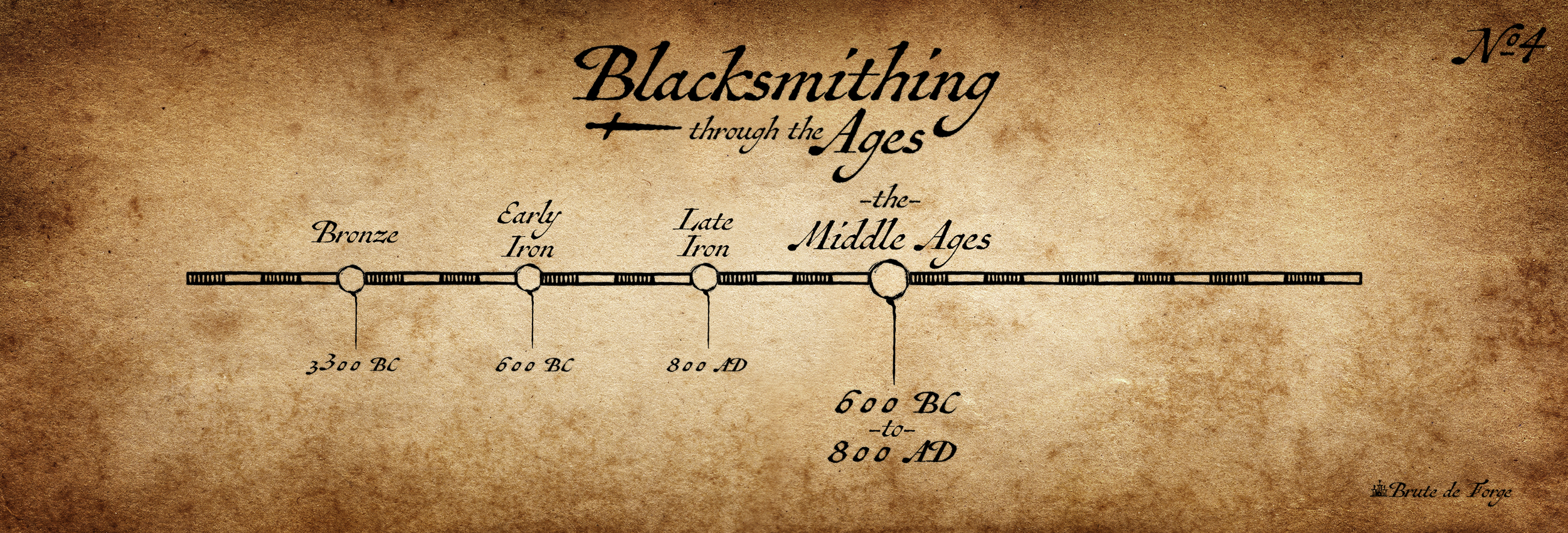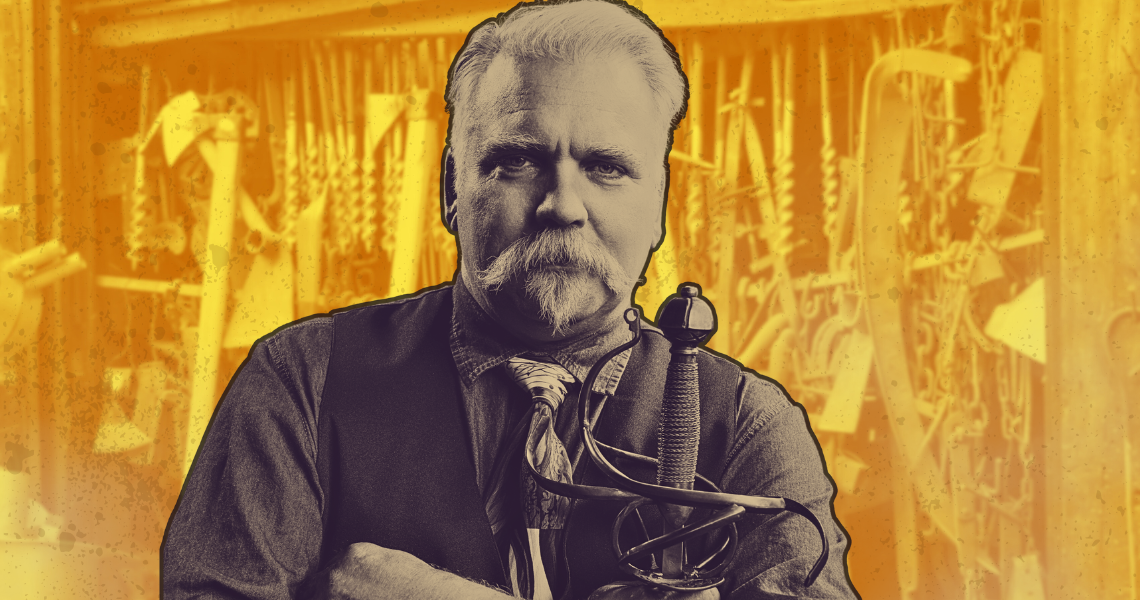Blacksmithing Through the Ages: Stuck In The Middle
(Image credit: Medieval Britain)
To recap, we have discussed the history of blacksmithing from the Bronze Age through the Early and Late Iron Ages. If you missed those articles, be sure to go back and check them out! By the end of the Iron Age, blacksmiths had become true craftsmen and artists. The ability to produce iron weapons and tools was no longer a game of trial and error but a science. Today, we will discuss blacksmithing during the Middle Ages (c. 500 AD – 1700 AD).
For the first time, technological advancements slowed during this time period. Iron and steel were still the preferred metals to work with, bloomeries continued to be the preferred heat method, and blacksmiths still relied on their tongs, hammers, and anvils to shape everything from swords to nails. They had perfected their skills and learned to work with iron and steel to create various tools, weapons, and other goods. Instead, the most significant change for blacksmiths in the Middle Ages was their status in society.
RELATED: BLACKSMITHING DURING THE BRONZE AGE
During the Middle Ages, blacksmithing was recognized as one of seven arts mechanicae, or mechanical arts. While respected and often recognized for their craftsmanship, individuals with these occupations did not come from the upper class but the working class. The mechanical arts were divided into seven trades: tailoring and weaving, agriculture, architecture and masonry, warfare and hunting, trade, cooking, and blacksmithing/metallurgy.
“The most significant change for blacksmiths in the Middle Ages was their status in society.”
(Image credit: The Medievalist)
Blacksmiths became incredibly important and revered members of their communities. In nearly every town, the village smithy, or forge, could be found in the city center, where all citizens had easy access. The smithy was the place to visit for weapons and everyday tools that a layperson might need to be forged or repaired.
The creation of guilds at this time played a significant role in their trade. Blacksmithing Guilds were meant to preserve the reputation of the profession. Through the guild, blacksmiths could regulate their numbers and reduce competition by controlling the number of apprentices, journeymen, and masters practicing the art. It also ensured that those who held the rank of the master blacksmith were held to a certain standard and could produce high-quality items. The guild ensured all blacksmiths had the required skill set. These skills could only be gained by starting as an apprentice and training under a master in the hope of one day being promoted.
Apprentices were often young men, between seven and twelve years old, with a low birth rank. They would be placed with the master blacksmith to learn the trade. Apprentices were responsible for smaller tasks at first, like keeping the forge clean and keeping the fires going. If all went well, and the apprentice proved his work ethic, he gained more skill, and the master could appoint him to the role of a journeyman.
“Blacksmiths could regulate their numbers and reduce competition by controlling the number of apprentices, journeymen, and masters practicing the art.”
Journeymen worked alongside the master and had the skills necessary to perform basic smithing. Not all apprentices graduated to the rank of journeymen, and even less to the level of master. Once they achieved the rank of master, however, they could choose what type of blacksmith they became.
For instance, castle blacksmiths typically lived within the confines of their lord's castle. Their primary job was to ensure the cache of weapons and armor was well stocked for the knights and soldiers of the land. Castle blacksmiths were common during the early Middle Ages but began to be less prevalent later. As time progressed and the need for their skills expanded beyond the need for weapons, blacksmiths found themselves venturing out into villages and cities.
RELATED: BLACKSMITHING DURING THE EARLY IRON AGE
Village blacksmiths often lived in rural communities and focused on tool-making and household objects. Their primary focus was on the production of farming tools, nails, horseshoes, and hinges. The village blacksmith’s daily job involved ensuring farmers could continue working without equipment failures and quick repairs.
Blacksmiths within cities and larger towns often worked closely with guilds, which meant they held some political power within the community. Much of their work was forged for upper-class clientele. Jewelry, locks, keys, and household tools would have been a few of their specialties.
“Blacksmiths within cities and larger towns often worked closely with guilds, which meant they held some political power within the community.”
Another typical station held by many blacksmiths during the Middle Ages was that of a battlefield blacksmith. Weapon production during the Middle Ages was ongoing and vast due to the near-constant state of war, which made the battlefield blacksmith a job in high demand. These blacksmiths would travel with the armies, repairing damaged weapons and armor or making new ones. Their job was busy and needed, making them well respected and often safeguarded.
RELATED: BLACKSMITHING DURING THE LATE IRON AGE
Some truly competent blacksmiths, who made a reputation for themselves, would be sought out for their talent by knights. In these instances, the blacksmith would work specifically for a knight and his squire. A knight needed weapons for battle, and he also required weapons and armor for tournaments. War and tournament armor were often different and required near continuous altering based on the knight's needs and specifications. Tournament armor would sometimes be intricately decorated, which required a true artisan. These blacksmiths were also required to dress the knight’s horse, which needed shoes and was often armored. Any blacksmith hired by a knight was rarely without work.
Be sure to check out the first three articles in our special series “Blacksmithing through the Ages” in which we discuss the Bronze Age, the Early Iron Age, and the Late Iron Age. Want more bladesmithing content? Be sure to follow us on Instagram and you’ll never miss a thing.
About the Author
More from Amanda
Trending

















